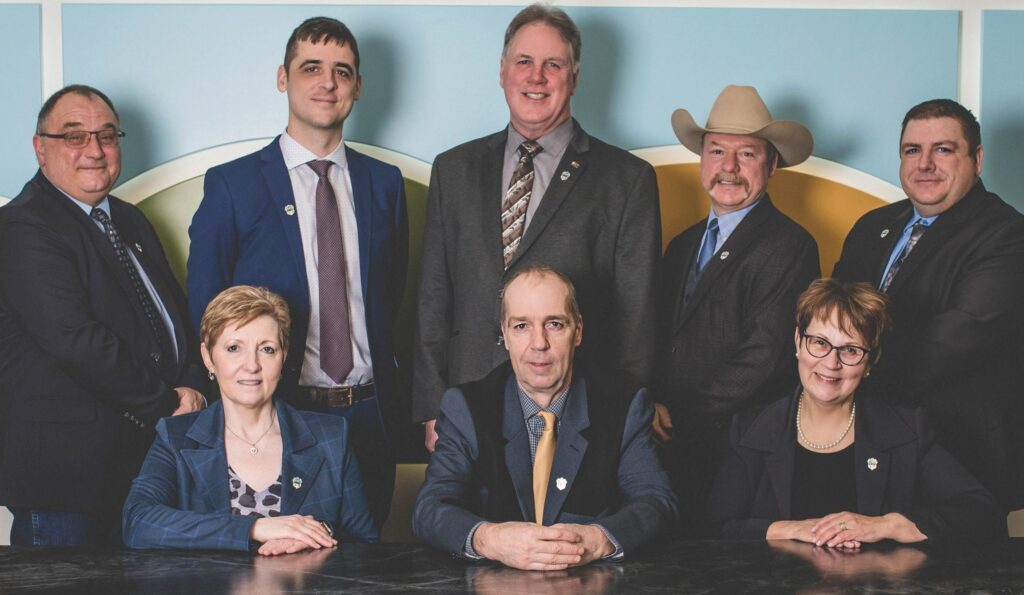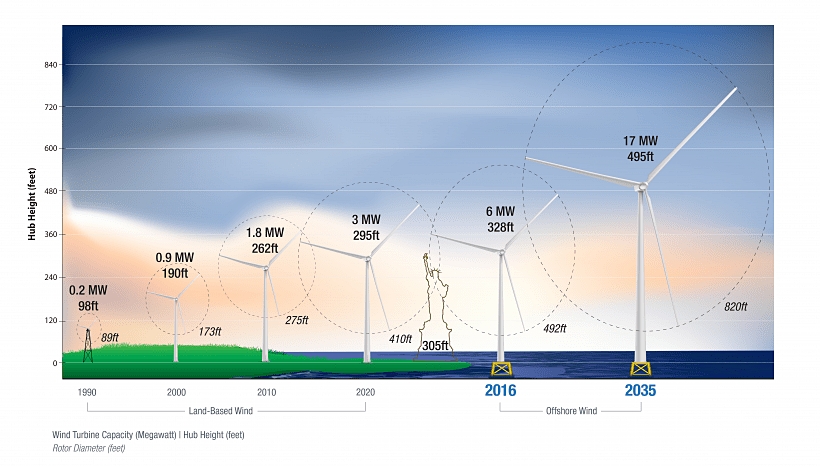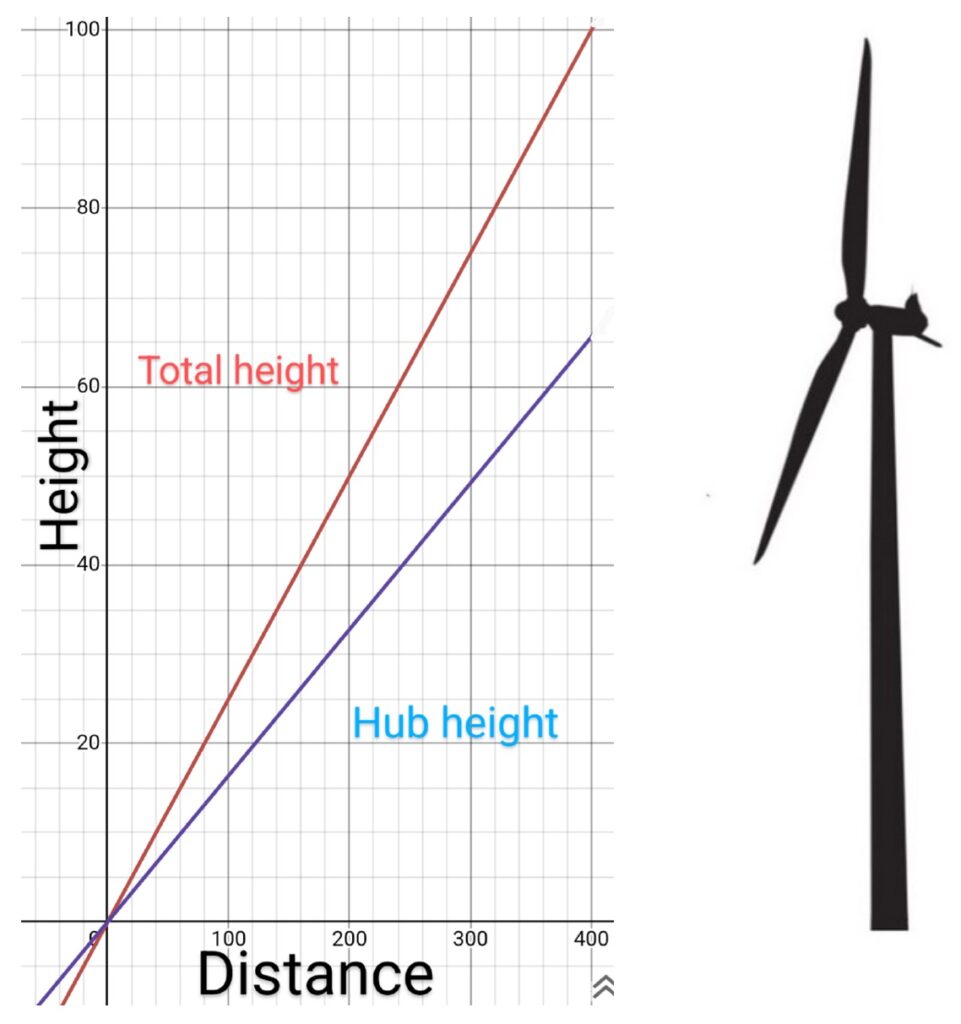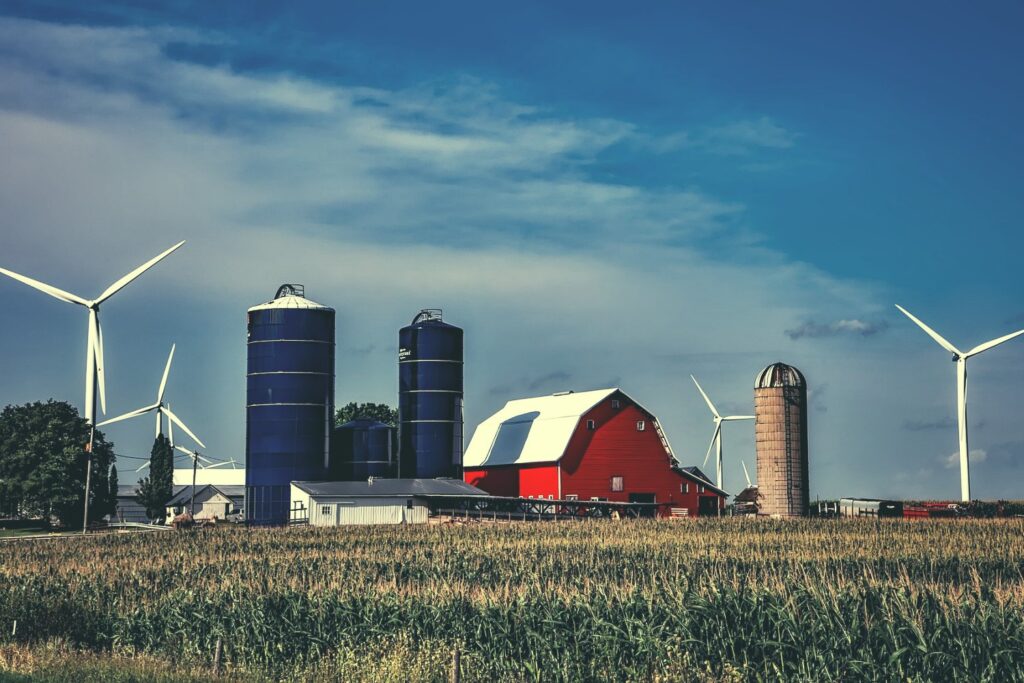The County’s website boasts the “Un-city Experience.” Indeed, anyone who travels to the County of St. Paul will see for themselves the rolling hills, numerous fresh lakes, a Heritage River (North Saskatchewan), Provincial Parks and campgrounds, and acreages nestled on hillsides in every direction. Which is why councillors there recently voted to restrict the height of industrial wind turbines, should they ever arrive.

In what County Reeve, Glen Ockerman (center, bottom), described as one of the largest turnouts to a public hearing in his memory, residents of the Northern Valley called for protections.
“We asked the County to implement bylaws that would restrict the height of turbines as well as setback distances from residents,” says Wind Concerns Editor-in-Chief, Mark Mallett, who was in attendance. “We cited numerous health studies that show people living as far away as 15km from wind plants have experienced adverse health effects.”1
Research shows, the taller the turbines, the bigger the impacts.
What we have observed is that people who live near the bigger wind turbines develop more quickly and more intense health problems than people who live near smaller wind turbines… there’s no option for this person but to run… people are put into impossible situations — impossible situations.
Professor Mariana Alves-Pereira, “Infrasound and Low Frequency Noise (ILFN)”, YouTube.com
In response, the County of St. Paul passed a bylaw this month restricting the height of turbines:
A WECS tower shall be setback not less than four (4) times the total height of the tower from all other property lines.
BYLAW NO. 2023-26B, Part 7.35 (31) – nb. total height includes the distance from grade to tip of blade; cf. Bylaw 2021-13, Land Use Bylaw
“We really have to applaud the County of St. Paul for taking this step,” says Mallett. “Wind corporations have shown complete disregard for the health, safety, and beauty of Alberta by planning to erect offshore-sized turbines right next to people’s homes. It’s beyond shocking, and it’s high time that government officials said, um, no you’re not.”
Indeed, the renewable industry’s own literature reveals that turbines intended to be built off of coastlines are actually ending up in people’s backyards. The turbines proposed for the Northern Valley are 679 ft (207m) tall, from base to blade tip. That’s clearly an offshore turbine (see graphic).

“No wonder people are getting sick from the infrasonic pulses of these monsters” says Mallett. “This is a human experiment, and thankfully, the courts in Europe are starting to recognize this.”
Earlier in March, the equivalent of the Supreme Court in France made an historic ruling to ban onshore wind ‘to protect the health of local residents.’2 In Ireland, the High Court ruled that ‘wind turbine noise’ is something that an ‘objectively reasonable person should not be expected to tolerate,’ and that victims can now claim damages.3
The Impact

Practically speaking, the County of St. Paul’s new bylaw would effectively require Elemental Energy’s towers to be halved. “I’m grateful to see the County of St. Paul stepping up to protect its residents. This is the first step in the right direction,” says Wind Concerns’ Chris Habiak. “The new bylaw not only creates protections for adjacent landowners by pushing turbines away from property lines, but it also reduces the maximum heights of the turbines.”
If a turbine were placed in the center of a quarter of land (400m from the property line), the maximum allowable tower height, base to tip of rotor blade, would now be approximately 100m under the new bylaw as opposed to the original 207m.
Habiak says the next step is working with the County to implement setbacks from residences.
Next Up: Setbacks
According to Brownlee LLP, the law firm representing Rural Municipalities Alberta, the Alberta Utilities Commission (AUC) is considering implementing setbacks.4 Currently, Alberta only has noise guidelines that wind corporations must abide by. Germany wants turbines 1000m away from residences.5 Poland was considering 700m.6 Ontario is only 550m.7 Quebec is 2km,8 while Slovakia is now 3km.9

However, Mallett says most of these setbacks are outdated due to the substantial height increases of turbines.10 For instance, Dr. Sarah Laurie, MD, found “hypertension in conjunction with turbine operation up to 5km away,11 and body vibration and nocturnal wakening in a panicked state up to 10km.”12 Vibroacoustic disease specialist, Prof. Mariana Alves-Peirera, found wind turbine acoustic signatures in a home 12km away;13 and as stated above, the Finnish Association for Environmental Health found health impacts only began dropping off after 15km.1
Levina Ewaskiuk is an award-winning Health Canada Nurse Manager and advisor to Wind Concerns.
Although the association between wind turbines and health effects is highly debated, there is growing evidence that living in close proximity to wind turbines can and does cause physical symptoms of ill health in some people… As a public health nurse, I recommend a setback of 10-15 km, which is supported by scientific research. Of course, the ideal is a ban on wind turbines in the County, as has been done in several counties in the USA. To subject the residents of the County to human experimentation without consent is totally unacceptable.
Levina Ewasiuk, March 19, 2024
Mallett says it’s crucial that the County of St. Paul “strike while the iron’s hot.” He’s referring to new guidelines requiring the AUC to allow municipalities to claim “intervener status” during hearings, and be compensated for their legal fees. Says Brownlee LLP:
While the AUC has the jurisdiction to override a Municipal Council’s policy choices in the land use bylaw or elsewhere, the results of the pause clearly indicate the AUC has been directed to pay more attention to municipal concerns…. Granting municipalities intervenor status, with the ability to claim costs awards, is a major and positive policy change. This will give municipalities an opportunity to voice their concerns; whether the AUC listens to municipalities remains to be seen.
https://brownleelaw.com/alberta-utilities-commissions-renewables-inquiry-a-municipal-perspective/
Brownlee also notes that the AUC has not given a timeframe when new setbacks may be implemented. Mallett says municipalities shouldn’t wait either. “The AUC was not elected by the people — their councillors, MLA’s, and Premier were. The research has been done. Courts in Europe have already established the harm being caused. Alberta’s civic leaders have an obligation to protect their residents, and we’re proud that our County has begun leading the way.”
- cf. Turbine Sickness: How Far Away is Safe?[↩][↩]
- cf. France: Historic Decision Halts Wind Development[↩]
- cf. Ireland: Landmark Wind Turbine Noise Ruling[↩]
- https://brownleelaw.com/alberta-utilities-commissions-renewables-inquiry-a-municipal-perspective/[↩]
- cf. noerr.com[↩]
- They seem to have settled on 700m by April 1, 2023; cf. euractiv.com[↩]
- ontario.ca/document/technical-guide-renewable-energy-approvals/required-setback-wind-turbines[↩]
- windturbinesyndrome.com[↩]
- cf. Slovakia: Turbines to be Set 3kms From Habitations[↩]
- cf. How Big?[↩]
- “Infrasound and Low Frequency Noise (ILFN)”, YouTube.com[↩]
- “Submission to the Australian Federal Senate Inquiry on Rural Wind Farms” Feb. 10, 2011[↩]
- “Infrasound and Low Frequency Noise (ILFN)”, YouTube.com[↩]
Wind Concerns is a collaboration of citizens of the Lakeland Alberta region against proposed wind turbine projects.



Congratulations, all your hard work seems to be paying off! Good luck with the setbacks from residences.
https://stopthesethings.com/2015/06/06/curt-devlin-details-a-decade-of-turbine-torture/
Please read this carefully.
That is very positive news indeed. The council members respresent we the people of this county. I am relieved our concerns are being heard, addressed and an action plan for bylaws incoming. As long as the new laws are put in place expeditiously.
Time is of the essence when dealing with the “green energy” slush fund recipient companies.
My thought is always… is there anyone on the council who would volunteer their yard for a wind turbine operating within 15 kms of their home? Impacting and most negatively affecting the health of them, their children or their grandchildren 24 hours a day?